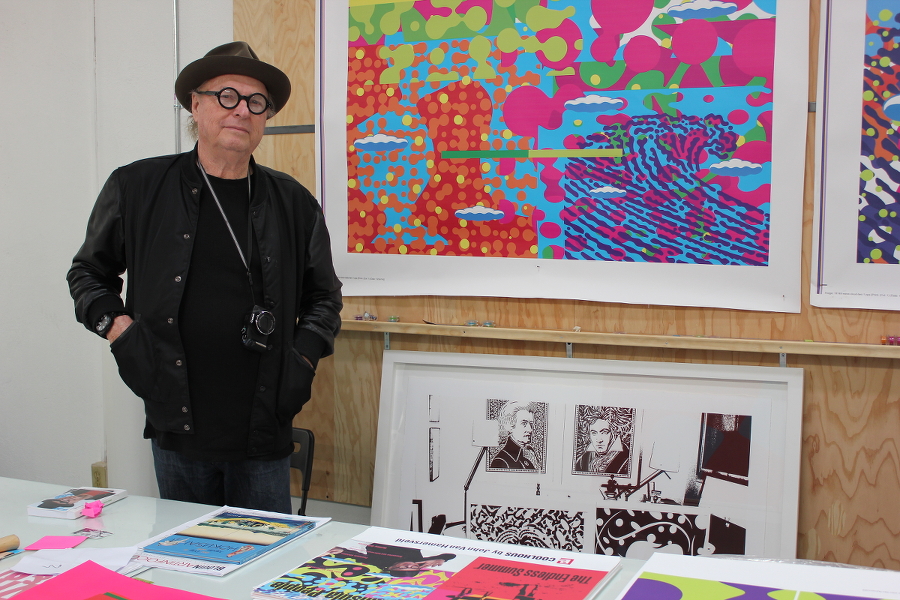On January 8, 2015, IFA PhD Candidate Elizabeth Buhe sat down with John Van Hamersveld in his Rancho Palos Verdes studio to discuss his work as a graphic designer, and, in particular, his 1960s psychedelic posters designed for Pinnacle Productions.

EB: To start, why don’t you tell me a little about your artistic formation.
JVH: I was guided into graphic arts and communication of American and worldwide design at Art Center. At Art Center I would go to this store in Westwood called Flax, and they had an international magazine stand there. I was able to see even further how typographical design, photographs, and the communication process were European and went back to the Bauhaus. But then—boom—you know, it was something that was very contemporary and everywhere with Life Magazine and all that.
EB: So what years are we talking about here?
JVH: That’s in the 50s, from the 50s going into the 60s. 1961 I go to Art Center. The second part is that I leave Art Center early, one year after my education there, and I’m taking off the summer. My father gets me a job at Northrop Aviation. Between the director and himself, they guided me into publication making. They would make these books up that they’d show to generals on all the secret information on developing and testing. So at home, I decided after learning all that I can do my own surfing magazine. So I created a surfing magazine in my bedroom. I gathered up people from around the community and made the stories up, and then basically put it all together in my bedroom and took it down the street and had a printer—just an ordinary store-front printer—print it. So out of that, all the sudden, I was at Surfer Magazine. And then I was at another magazine called Surf Guide. So there’s three magazines that I’d been designing over a three-year period of time. I decided that I’m going to go to Chouinard, and get back into my art education. So I go to Chouinard, which is just turning into CalArts, and changing all of the sudden. At Chouinard I was anticipating becoming a painter, and I showed my canvases there. This was in 1965. The counselor who starts me out says you can take photography, you can take film, you can take video, and you can take animation. You can take all these other things that would be complementary to your communication classes of graphic design. So all the sudden it was like art! But it was media art. That was then developed into a thing called Pinnacle, which was this big promotion that I was able to do.
EB: Right. Before we start with Pinnacle, can we go back to some of your earlier influences?
